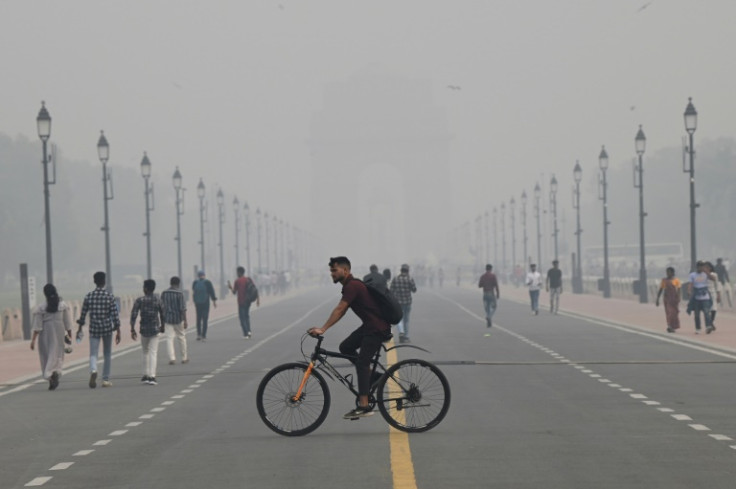Three Indian Cities Among The Top Ten Most Polluted Cities In The World
The air pollution level in some parts of Delhi was 30 times the prescribed WHO limit.

Three Indian cities became among the top 10 most polluted cities in the world on Monday, a day after the country celebrated Diwali, the annual Hindu festival of light.
According to an analysis by the Swiss group IQAir, India's capital, Delhi, had an air quality index (AQI) figure of 407, putting it in the "hazardous" category.
Delhi was at the top, while the country's financial capital, Mumbai, came in sixth with an AQI of 157, while Kolkata was seventh with an AQI of 154. IQAir analysed data from 109 countries for its analysis, which involves measuring the quantities of PM [particulate matter] 2.5 in the air.
The other cities that have made it to this list of top 10 most polluted cities include Lahore (with an AQI of 384), Baghdad (202), Karachi (182), Dhaka (172), Kuwait City (170), Doha (158) and Jakarta (151).
PM 2.5 are tiny particles in the air that can enter the lungs and bloodstream. The PM 2.5 limit set by the World Health Organization is 5 μg/m3. However, most countries have failed to meet the WHO-prescribed limits.
According to the WHO, air pollution is responsible for about 7 million premature deaths per year. It adds that the disease burden due to air pollution is now estimated to be on par with other major global health risks.
In some cases, extremely tiny air pollution particles can even cross the blood-brain barrier and damage the neurons directly. However, PM 2.5 has especially become a major cause of concern for authorities across the globe since it is so small that it can penetrate deep into the lungs.
Should we be worried?
Recently, a study conducted by the University of Chicago's Energy Policy Institute (EPIC) claimed that increasing air pollution can cut life expectancy by more than five years per person in the region.
The countries at risk are also some of the most polluted countries in the world, such as Bangladesh, India, Nepal, and Pakistan.
The study states that people in Bangladesh can lose 6.8 years of life on average per person due to air pollution, as opposed to people in countries like the United States, who stand to lose 3.6 months of their lives.
The situation is no better in India, which is responsible for about 59% of the world's increase in pollution since 2013, according to the report. The average life span of people residing in India's capital, New Delhi, may be reduced by around 11.9 years.
Similarly, another study published in The Lancet revealed that pollution caused approximately 9 million premature deaths worldwide in 2019. It included countries like China, the US, and many African and European countries.
More than 90 per cent of pollution-related deaths happened in low and middle-income countries, with India coming in at the top of the list, followed by China with 2.1 million deaths.
The latest analysis of data obtained from more than 100 countries has revealed that air pollution is also causing a rise in antibiotic resistance (AMR), posing a threat to human health. The researchers from the UK and China analysed data that was collected over the last 20 years and found that air pollution is affecting every country.
Similarly, another study published in The Lancet revealed that pollution caused approximately 9 million premature deaths worldwide in 2019. It included countries like China, the US, and many African and European countries.
The annual pollution crisis:
According to a report by the World Health Organisation (WHO), the air pollution in some parts of Delhi was 30 times the prescribed WHO limit.
According to a report by the Delhi Pollution Control Committee, the firecrackers on Sunday contributed to the spike in pollution levels in the city.
#WATCH | On 'severe' air pollution in the national capital today, Delhi Environment Minister Gopal Rai says, "Wind speed was expected to slow down after Diwali, and due to this smog situation has developed. After firecrackers were burst yesterday as well, pollution levels have… pic.twitter.com/YgQhxDTAkE
— ANI (@ANI) November 14, 2023
India's highest court even imposed a ban on the use of firecrackers in New Delhi to curb the rising pollution in the national capital but to no avail. Such bans are rarely imposed.
New Delhi has been witnessing a sharp surge in the toxicity of the air over the past few months. Several residents have also left the city for other places, fearing health concerns over the increasing smog.
© Copyright IBTimes 2024. All rights reserved.






